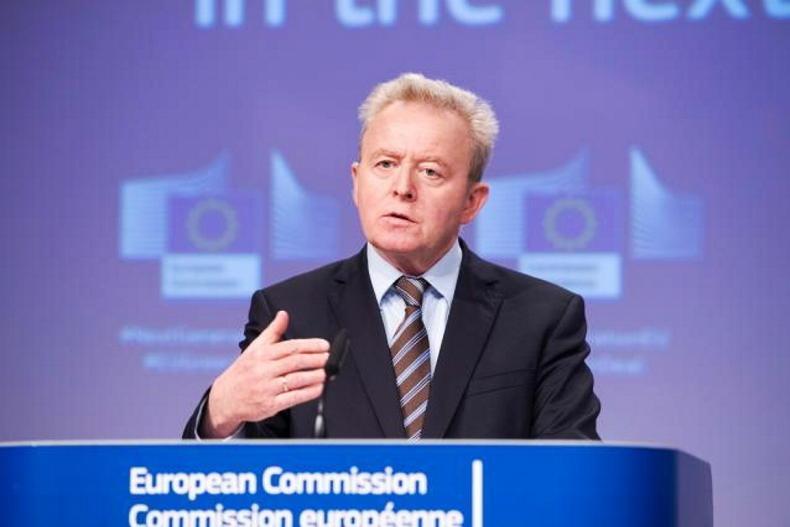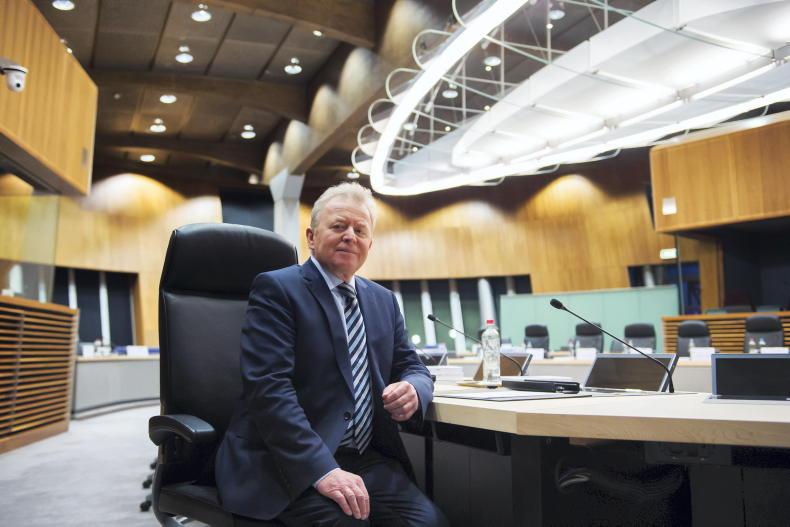Europe’s food systems are already among the most efficient in the world. But a much higher level of ambition is necessary if we are to achieve our goal of reaching climate neutrality in 2050, while protecting and restoring biodiversity. Earlier this year, we published our Farm to Fork strategy – the start of the process to translate our goals into specific initiatives.
The Farm to Fork strategy sets out a robust course, addressing environmental, social and economic sustainability and ensuring that food security and safety remain key foundations of our food systems.
Importance of food
It fully acknowledges that a sustainable food system must ensure sufficient and varied supply of safe, nutritious, affordable and sustainable food to people at all times, not least in times of crisis.
At the same time, it will help our farmers to make the transition and secure their livelihoods in the face of climate change and biodiversity. Digital technologies will play an important role in increasing the farming sector’s sustainability and competitiveness.
I know that the strategy has raised some concerns among our farmers and attracted criticism from some of our trading partners.
I would like to take this opportunity to allay the concerns and address the criticisms.
Farmer support
Let me start by saying that protecting the livelihoods of EU farmers has always been, and remains, a priority of the Common Agricultural Policy. European farmers will be well supported by the European Commission in taking on the challenges of Farm to Fork.
Our proposals for the new CAP include strengthening the resilience of farmers and encouraging sustainable and innovative farming practices such as precision agriculture, agro-ecology, agro-forestry and organic farming.
More specifically, eco-schemes, which are part of direct income support and environmental and climate management commitments under rural development policy, will be key to stimulate these practices.
Part of that approach is to increase resilience to external shocks via product differentiation and creating shorter supply chain alternatives for those most exposed.
Opportunity in sustainability
The move to more sustainable food systems is also an important economic opportunity. Consumers’ expectations are evolving and driving significant change in the food market, with a growing demand for organic and locally produced products.
It has been argued in some quarters that shifting towards more environmentally friendly practices may result in higher costs and less supply because of lower agricultural inputs.
This simply does not have to be the case. Farm to Fork acknowledges that a sustainable food system must ensure sufficient and varied supply of safe, nutritious, affordable and sustainable food.
As demand for sustainable food increases, economies of scale will reduce production costs.
Taking into account differences among member sates and their starting points will also be essential if we are to better combine food security and sustainability.
It has also been said that our ambition to curb food waste and shift towards balanced diets may reduce the demand for food.
Increased demand for sustainable food
In fact, the strategy will help to increase consumer demand for sustainable food. This is an opportunity for farmers to sell products with higher value-added and to reinforce their connection with consumers.
This also means promotion of local processing and direct marketing by farmers who often find themselves shut out by large intermediary wholesalers.
The strategy will encourage business models which can achieve better results for the environment while also delivering higher returns for farmers.
Some have even claimed that the Farm to Fork strategy will freeze technological progress.
The reality is the exact opposite. Research and innovation, investments, digitalisation and new technologies are at the heart of the Farm to Fork strategy. Digital technologies can transform agriculture by helping farmers work more precisely, efficiently and sustainably.
Role of technology
Research and innovation can support farmers in striking the balance between productivity, climate and environmental goals. For instance, by using digital technologies such as sensors, farmers can assess production and environmental conditions more efficiently, tailor the use of fertilisers and irrigation, and reduce both inputs and emissions.
Agro-robotics can support the production process in areas such as weeding. We are currently looking into more innovative techniques, including biotechnology and the development of bio-based products. We are examining the role they may play in increasing sustainability, provided they are safe for consumers and the environment.
To sum up, I would say that the Farm to Fork strategy sets a clear pathway towards a more balanced relationship between agriculture and environment. It helps farmers to undertake the transition and secure their livelihoods in the face of climate change and biodiversity loss and helps our citizens to opt for a healthier and more sustainable diet. These are objectives which I believe can be shared by nations and citizens across the world.









SHARING OPTIONS